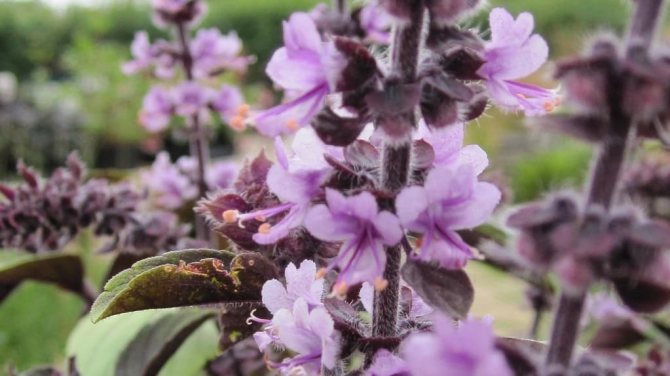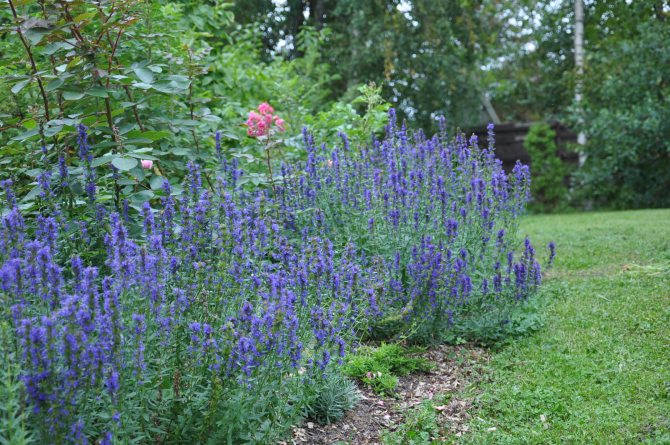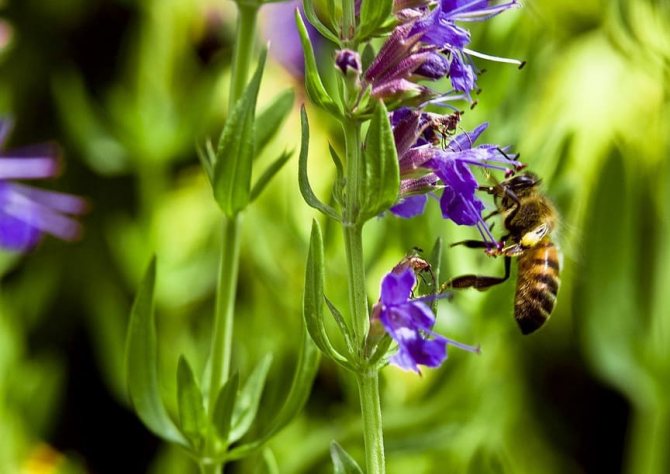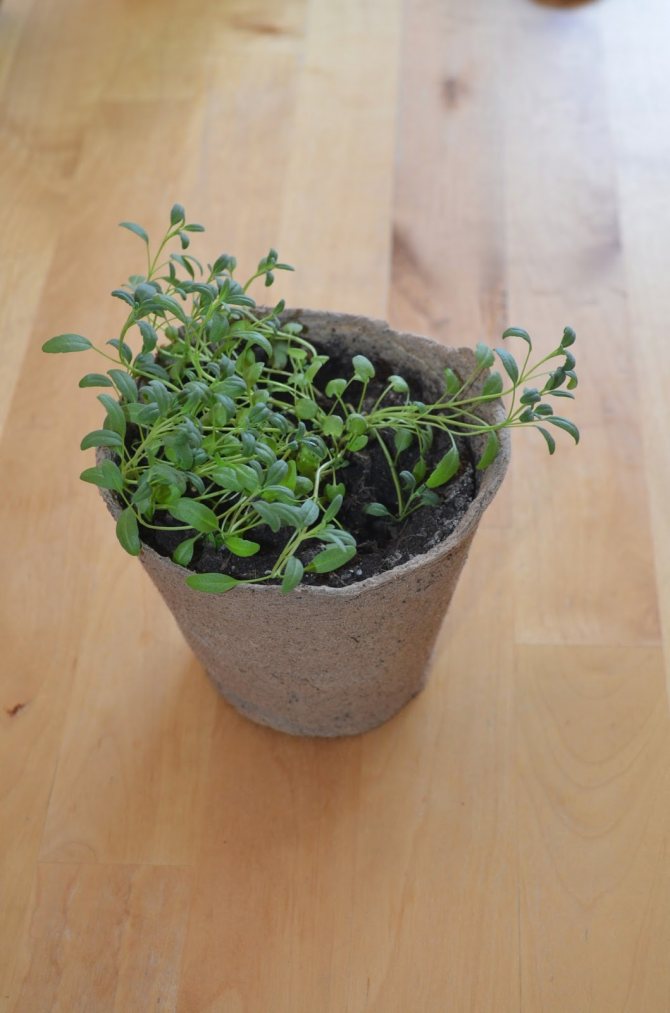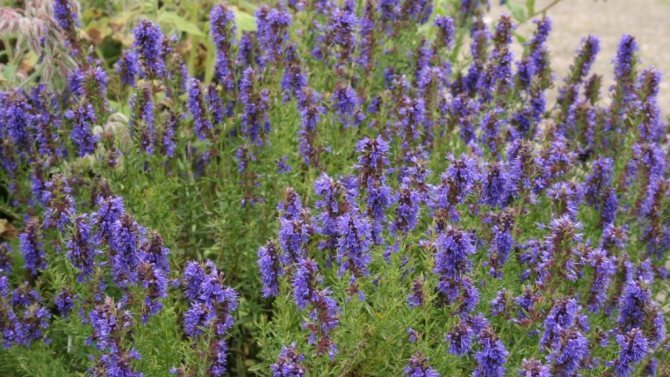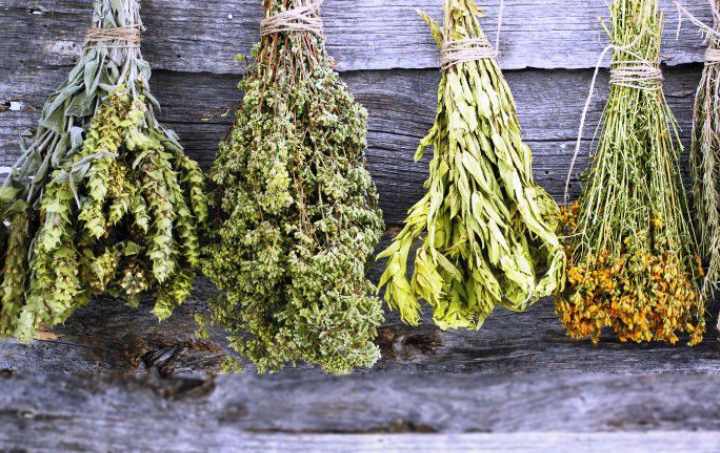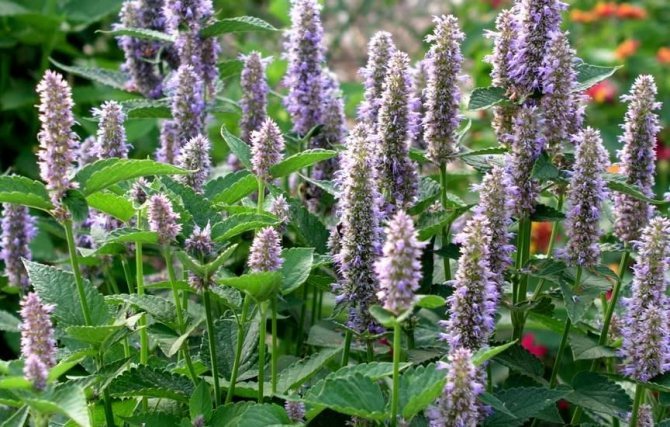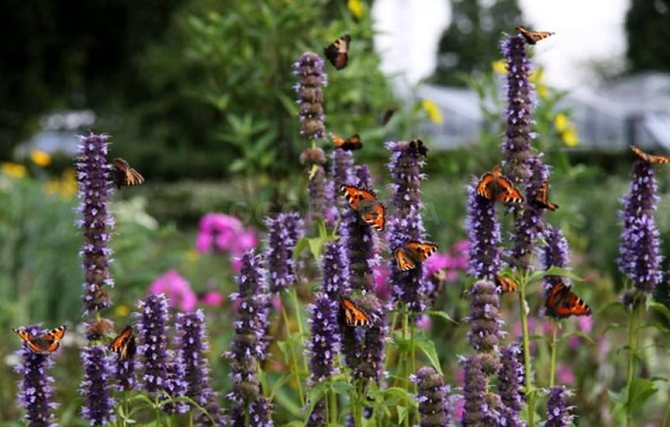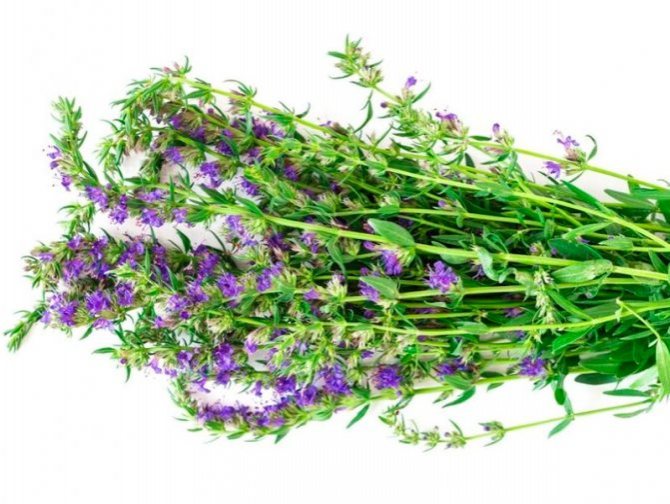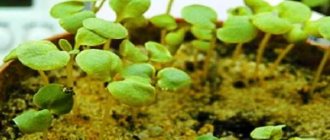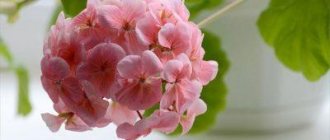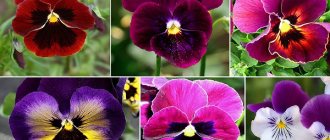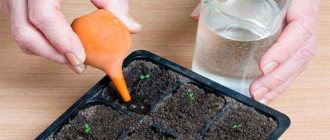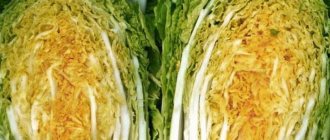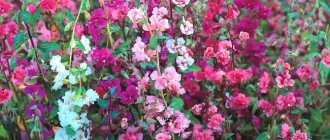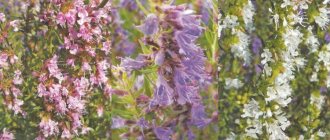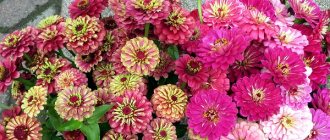In this article, we'll talk about how to grow hyssop, a medicinal plant, a fragrant spice and just a beautiful decorative flower in our garden.
- Growing features
What kind of plant is hyssop
In Latin, the name of the perennial is Hyssopus officinalis, which means "sacred fragrant herb" in Hebrew. More than 300 varieties of this culture are known, the most common are common hyssop (aka medicinal, St. John's wort, yuzefka, susop, hisop), anise, narrow-leaved, Zeravshan. Popular with gardeners is a rare, listed in the Red Book hyssop with a balsamic aroma - chalk.
What is hyssop is unambiguous and you will not answer.
It:
- Medicinal plant;
- Excellent honey plant;
- Raw materials for essential oils;
- Spice used in cooking;
- Because of the aroma, the shrub can be planted to save the garden from pests;
- A magical plant. Since ancient times, hyssop has been used in magic. It is believed that its scent promotes restful sleep for the child, the herb is added to the filler of the mattresses or placed in a small bag under the pillow. A twig in a shoe becomes a talisman against evil spirits, and a twig in the palm of your hand relieves fatigue and restores strength;
- Ornamental shrub. Landscaping with it is based on a contrasting combination of this semi-wild plant with noble partner neighbors. Use shrubs to frame paths, create hedges. "Blue St. John's wort" is complemented by collections of aromatic plants, which already contain mint, lavender, rosemary, oregano, sage.
What cannot be cut
- Spring flowering shrubs and trees (things like azalea, lilac, dogwood, viburnum, hydrangea)
- Ornamental grasses
- Hardy perennials (plants about which you are never sure whether they will come back to life or not until you see new growth in spring)
- Perennials that provide winter interest (baptisia, Siberian iris)
- Seed perennials that feed birds (Echinacea, Black Eyed Susan, Aniseed Hyssop)
Hyssop medicinal for diseases
The application was found by medicinal hyssop, it is also St. John's wort, forest, bee grass, in the practice of folk healers. They, using its anti-inflammatory and antiseptic properties, treat many diseases. The useful composition provides a wide range of therapeutic uses for "blue St. John's wort". The plant can be used to treat gastrointestinal and respiratory diseases, genitourinary system, skin ailments.
Important! Self-treatment in the presence of chronic diseases should be started with a doctor's consultation. There is also a contraindication - it is not recommended to treat children under the age of 12 with grass.
Due to its expectorant, anti-inflammatory, antibacterial properties, the herb is used to treat coughs of various origins (with bronchitis and pneumonia, senile, caused by inflammation of the upper respiratory tract). Taking herbal formulations helps to eliminate bronchospasm in asthma. Hyssop is a plant that is used externally to treat skin conditions.Water extracts from it are used for rinsing the mouth - they are effective for angina, stomatitis, gingivitis, periodontal disease, flux, bad breath, hoarseness.
Hyssop and cooking
For culinary purposes, young tender leaves and the top of the inflorescence are used - the spicy smell of hyssop gives aroma and piquancy to the dishes, and the bitterness in the composition stimulates the secretion of gastric juice.
Spice is added to meat, minced meat, sausages, pates, vegetables, pickles, pickles, and a small amount of other spices enhances the aroma of hyssop. Due to the strong spicy aroma and specificity of the composition, add hyssop to vegetables carefully - you can spoil the taste by making it bitter.
As a spice, hyssop should be used in a standardized manner - 0.5 g in soups, 0.3 g - in main courses, 0.2 g - in sauces. It is not recommended to cover the dish after adding the spice - the aroma becomes too strong and can overshadow all other odors.
Agrotechnics
You can grow a culture both in a shaded and open to the sun place - the plant is unpretentious. To grow a beautiful ornamental bush or get a high yield, the culture is planted in an open area.
Hyssop herb grows well in fertile loose soil with neutral acidity. The culture does not like waterlogged soil, so it should not be planted in swampy and flood-prone areas. Also, dense, clayey soil is not suitable for shrubs.
Advice. It is not recommended to grow isop near a vegetable patch. It is planted away from garden vegetables: in a flower garden or along paths, a hedge.
The culture is planted mainly in spring, the soil is prepared in the fall, digging and fertilizing with compost (3-5 kg per square meter), adding peat, in late autumn neutralizing acidity by liming. In the spring, before planting, a complex mineral fertilizer is applied, at the rate of 50-60 g per square meter, or wood ash (1 glass).
Reproduction methods
Seeds
They are sown in early spring (from late April to early May) or before winter. In the garden, when growing hyssop, shallow grooves are made from seeds at a distance of about 30 cm from each other. Seeds mixed with sand are placed in them. This is done because the seeds are very small and difficult to sow and distribute evenly over the furrows. Sowing from above is sprinkled with a small, about 1 cm, layer of soil. When planting in spring, the land is mulched with peat. Seedlings hatch at above-zero temperatures after 2 weeks.
Important! Hyssop, grown from seed, blooms only the next year.
Seedlings
When grown as seedlings, hyssop blooms in the year of planting. To obtain seedlings, seed material (seeds can be mixed with sand) is sown in early March in a shallow box with soil. As with propagation by seeds, the sowing is sprinkled with a layer of earth of 1-1.5 cm. The container, in order to create comfortable conditions for the germination of seeds, is covered with glass or film material. When 2 true leaves appear on the hatched seedlings, the seedlings can be dived into separate containers (it will be convenient to transplant the seedlings into open ground along with the cups if they are peat).
Advice. It is necessary to dive the seedlings, deepening them by 7-8 cm and making sure that the growing point is not covered with earth.
By dividing the bush
This method is the simplest and most labor-intensive. In the fall, immediately after flowering, the bush is dug up, divided into several bushes. Plants obtained by division are planted in a permanent place.
Advice. Manipulations with the bush must be carried out in a timely manner, before frost, so that the planted plants have time to take root.
Cuttings
Hyssop can be grown by cuttings, cutting off shoots up to 10 cm long from the bush, and placing them for rooting in a container with soil of sand and peat. The cut is buried in half, covered with a glass jar or plastic cap.New shoots that have appeared on the cuttings become the signal to plant in a permanent place.
Hyssop planting and care in the open field
Seedlings are planted in open ground at the age of about 2 months, provided that 5-6 leaves have grown on the plants. The time is selected when stable heat is established (the outside air temperature should not fall below +10 ° C). Plants are planted at a distance of 30-40 cm from each other.
Hyssop planting and care in the open field
Advice. For good survival in the first days, the seedlings can be covered with spunbond and must be covered with frost.
For normal growth, a shrub needs:
- Regular watering. It is necessary to water the plant often and in moderation in order to exclude rotting of the roots from excess moisture;
- Top dressing. When planting and caring for a young hyssop bush, regular feeding is important - a young growing plant needs a balanced composition of minerals. Enrich the soil with regular fertilizing from organic and mineral fertilizers, once every 20-30 days;
- Loosening the soil and weeding from weeds;
- Pruning and sanitation. The flowering period of the plant can be extended until frost, for this you need to cut off the flowering inflorescences - young shoots with buds begin to grow from pruning. The bush is also cut off for the winter, shortening the shoots to 20 cm. The bush, which has undergone autumn pruning, grows well the next year and blooms profusely.
Read also Pumpkin casserole with cottage cheese in the oven dietary
Advice. Perennial during flowering reproduces by self-seeding. Weak plants grow from seeds that fall on the ground, the area from them becomes clogged. Therefore, gardeners do not allow the seeds to ripen on the bush, but cut off the inflorescences when the bolls begin to turn brown.
Seed collection
Cut off shoots with brownish bolls are hung down by the inflorescence. This is how the seeds ripen. To prevent them from spilling out on the floor, the shoots are covered with fabric bags.
Harvesting and storage
Young flowering shoots are harvested from hyssop medicinal, cutting off only the top from them. The rest of the shoot is not touched - the stem grows quickly and blooms. The cut raw materials are sorted out, removing spoiled shoots and garbage with crumbling inflorescences. For drying, cut shoots are tied in bunches and suspended in a shaded place with good ventilation, with the inflorescences down. When drying in dryers, a temperature regime of up to 40 ° C is selected in order to preserve essential oils in the plant.
Dried raw materials are crushed and laid out in dense paper bags or fabric bags.
The herb can be stored for no more than 2 years. The time for harvesting is when the hyssop is just blooming. Typically, the crop is harvested during the month, starting in early June.
Hyssop is an unpretentious and beautiful plant, has many useful properties: medicinal, decorative, magical, melliferous. It can be cultivated in the regions of central Russia, in the Urals and the Caucasus, in Ukraine and Central Asia.
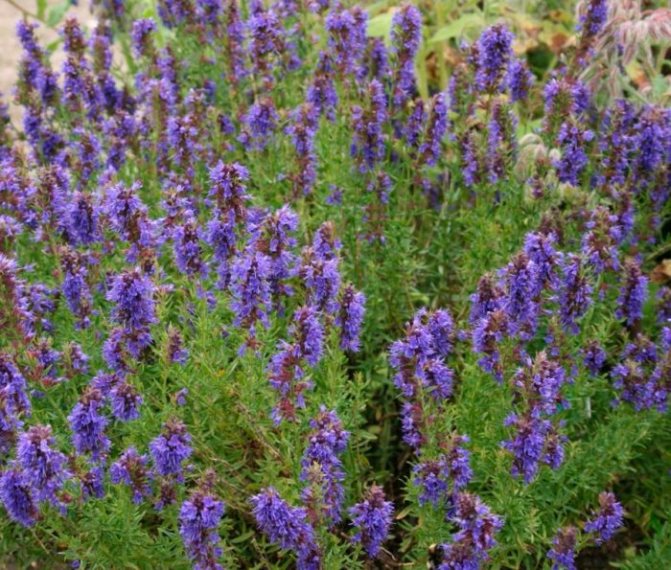
Hyssopus officinalis, either blue St. John's wort or common hyssop, is a species of the genus Hyssop of the Lamb family. Under natural conditions, such a plant can be found in Western Asia, Eastern, Central and Southern Europe, in North Africa. This plant is cultivated in North America and practically throughout Europe. Hyssop is considered a very ancient medicinal plant; even Dioscorides and Hippocrates used it to treat patients. Dried and fresh young shoots with foliage are used as a spice for first and second courses, as well as snacks. This plant is included in dietary meals. A very famous physician Arnold from Villanova at the beginning of the 16th century wrote a poem, which he dedicated to medicinal plants, it was called the "Salermo Code of Health".It contains the following lines about this culture: “The grass cleans the chest from phlegm, which is called hyssop. Hyssop is useful for the lungs, if it is boiled together with honey, And they say that it gives the person an excellent color. "
How to grow hyssop
When choosing a site for growing hyssop, you need to take into account that in one place it can grow for 5-10 years, then it must be transplanted, otherwise the number of flowers decreases significantly, the plant becomes smaller.
The culture does not make any special demands on the soil, you just need to check the acidity - hyssop does not tolerate acidic earths well. If there is no possibility of planting in another place, then the soil is lime.
The site should be dry, well lit, but light partial shade is acceptable. When planted in the shade, the bushes stretch out, become weak and inconspicuous, and the color of the flowers is less saturated.
It is necessary to prepare a place for planting a plant in the fall. Preparation consists in digging with the simultaneous introduction of compost (5kg per 1m²), superphosphate and potassium salt (30g and 20-30g per 1m², respectively). After thawing the soil in the spring, it is dug up again, additionally adding ammonium nitrate or urea (15-20g per 1m²).
Growing by seeds
Planting hyssop is possible in autumn and spring - it all depends on the availability of seeds, opportunities, weather conditions.
For convenience, the seeds, due to their small size, are mixed with fine river sand and distributed into moistened grooves 1 cm deep, lightly sprinkled with earth, then peat so that a crust does not form on the surface. Germination begins after 10-14 days at a temperature of + 2 ° - + 3 ° C, the plant will begin to bloom the next year.
Seedling method of growing
For seedlings, seeds are sown in early March in small containers. You need to fill it with a layer of soil no more than 1.5 cm - the seeds are small and it is difficult for them to beat through a thick layer. The containers are covered with foil, glass and put away in a warm place. In the presence of 2 leaves, a pick is carried out into individual cups, leaving the growth point above the ground.
After 50-60 days, when the plant has 5-6 leaves, the temperature outside is not lower than 10 °, it is planted in open ground, leaving a distance of 30-40cm between the bushes. Planting is sheltered from possible frost.
Planting care
Like any other plant, hyssop needs weeding, loosening, watering and feeding.
Care steps:
- watering is required in moderation, without waterlogging the soil, so that the root system feels comfortable;
- young plants (1-2 years old) should be fed with organic matter and mineral fertilizers once every 30 days, excluding nitrogen at the beginning of flowering;
- flowering lasts longer if wilted buds are cut off;
- in the fall, before the onset of cold weather, it is necessary to carry out sanitary pruning of young shoots, leaving 10-12 cm in length - this will activate the growth of stems in the next season;
- you do not need to cover for the winter, you just need to cover the soil near the trunk with dry leaves, straw to protect the roots.
Information!
Due to the strong specific smell, pests do not like hyssop. Disease also bypasses him.
Hyssop can be propagated by sowing seeds, dividing the bush and cuttings.
Method of dividing the bush
Dividing a bush is a very convenient and easy way. To do this, choose a strong bush, dig it out after flowering, divide it into parts (delenki). Each piece is planted in a hole and watered well. Planting should be carried out before the onset of frost, so that the root system takes root in a new place.
Cuttings
You can get cuttings throughout the growing season. Cut segments 10 cm long from any strong shoot, planted in a mixture of equal parts of peat and sand, deepening by 50%. Cover with a jar on top, a glass to create a greenhouse effect. Care consists in watering and protecting the hyssop plantings from the bright sun.
The greenhouse is removed when shoots appear, and in the fall the seedling is transplanted into place. The plant will start to bloom next year.
Seed collection
Hyssop reproduces well by self-sowing and, if seeds are allowed to spill out after ripening, the plantings will acquire a sloppy, unkempt appearance, and the grown plants will be weak, inconspicuous. To prevent this from happening, shoots with seed bolls that have begun to turn brown, without waiting for the seeds to fully ripen, are cut and hung down with bolls to dry and ripen.
When sowing into the soil in spring, the seeds are stratified, and when sowing on seedlings, this is not necessary.
To prevent the seeds from spilling out, the boxes are tied with a cloth.
Growing hyssop on a personal plot brings double benefits - a source of medicinal raw materials and a decorative design of the territory. The culture looks great in the company of perennials, will decorate an alpine slide and a lawn, create a hedge along the paths, and planted together with other medicinal plants will create a beautiful useful corner on your territory. Caring for him is simple and not burdensome.
To improve the ecology of the garden, a wide variety of non-capricious plants is needed, therefore hyssop grass is perfect for replenishing the econiche of the garden. By paying attention to just a few factors, you can grow this undemanding plant in your garden. So, meet - perennial hyssop herb (planting and care, pruning, use in landscape design).
Brief description of cultivation
- Bloom... June – October.
- Landing... Sowing seeds in open soil is carried out in April or May, sowing seedlings - from early to mid-March, transplanting seedlings into open soil - from mid to late May.
- Illumination... The site must be well lit.
- Priming... Pre-fertilized calcareous soil should be well-drained and moderately moist.
- Watering... It needs watering only during a prolonged drought, while 1.5 to 2 buckets of water are taken per 1 square meter of the plot.
- Fertilizer... It is necessary to feed only if necessary; for this, a solution of a complex mineral or organic fertilizer is used.
- Pruning... At the same time with the collection of medicinal raw materials.
- Reproduction... Seeds. It reproduces well by self-seeding.
- Harmful insects... Do not settle on the bush.
- Diseases... Rust, rhizoctonia, fusarium wilting or white spot.
- Properties... It is a medicinal plant, which is distinguished by antipyretic, diuretic, laxative, antimicrobial, wound healing, expectorant, antiseptic, bactericidal, analgesic, antihelminthic and stimulating effect.
Hyssop: photos, types, useful properties, cultivation and application
Hyssop officinalis has long been known for its medicinal and spicy qualities. It belongs to the Lamb family. It grows naturally in Eurasia and Africa. In many countries, it is grown as a medicinal and spicy crop. Due to its decorative appearance, it is widespread among flower growers - it is often planted in flower beds and flower beds. It is also an excellent melliferous plant.


It is a herbaceous perennial branched shrub 20-80 cm high, with a taproot, woody root. On its numerous tetrahedral stems, opposite, almost sessile, lanceolate leaves are densely located. In the lower part of the stem, they are larger, and as they move to the top, their size gradually decreases.
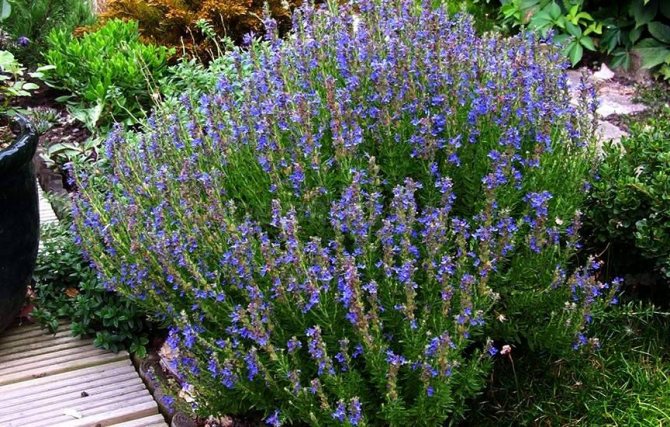

It blooms in the middle of summer with bright blue two-lipped flowers, collected in beautiful oblong spike-shaped inflorescences located at the ends of the stems. There are plants with purple, pink, white flowers, which are much less common. After flowering, nut-like seeds of a dark brown color ripen.
Features of hyssop
The hyssop has a woody root.The tetrahedral branchy twig-like shoots can be practically naked or short pubescent, their length is 0.45–0.7 m, and they are woody at the base. Almost sessile, oppositely positioned entire leaf plates have short petioles and a lanceolate shape, their length is 20–40 mm, and their width is 4–9 mm. In the leaf axils there are 3-7 small two-lipped flowers, which form the apical spike-shaped inflorescence. Flowers can be blue, pink, purple or white. The plant blooms in June – October. All types of such a plant are considered honey plants, and therefore they attract bees to the garden plot. The seeds ripen from mid to late August, while they remain viable for 3-4 years. Hyssop has a strong spicy scent that remains green even after winter. Hyssop is a widely used spice in cooking and a versatile healing agent.
About hyssop
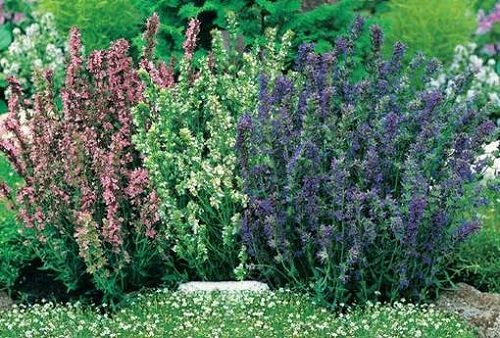

Hyssop is a perennial semi-shrub with a strong spicy aroma and taste, 50-70 cm high, with small blue, purple or even pink flowers.
In the wild, it is found in the Mediterranean countries, the foothills of Altai, Crimea, Kazakhstan.
In our gardens, hyssop is grown as a spicy and excellent ornamental plant. The popular names of this plant are blue St. John's wort, hyssop herb, susop, yuzefka.
Hyssop bushes look very cute, covered with flowers, over which bees are constantly buzzing, since hyssop, moreover, is an excellent honey plant.
It blooms for a very long time from June to October, until the very frost. On the site, it is enough to plant only 4-5 bushes of this plant and you will be provided with spicy greens.
Hyssop is also good because it can be cut off for drying several times during the season and it grows back quickly.
Young shoots with leaves and buds can be used for food, they are very pleasant to taste and smell.
I use hyssop as a seasoning for many salads, vegetable soups and sauces, as well as for fish and meat dishes.
It is also very suitable for flavoring liqueurs, liqueurs, all kinds of pickles and marinades.
Growing hyssop from seeds
Sowing rules
For propagation of hyssop, seeds and a method of dividing the bush are used. In open soil, seeds are sown in April or May. It is possible to grow such a plant through seedlings; for this, the seed material is sown without pre-sowing stratification in seedling boxes filled with a nutrient substrate. Sowing is carried out from the beginning to mid-March in grooves, the distance between which should be about 50-100 mm. From above, the container with crops must be covered with plastic wrap, which should be transparent, then it is removed to a warm place.
Growing seedlings
The first seedlings should appear after 15 days. To grow seedlings, they need to be systematically watered and fed. Planting of plants in open soil is carried out after they have formed 5 or 6 true leaf plates. However, half a month before transplanting them into open ground, they should be hardened; for this, the seedlings are transferred to the street every day. At first, she should be in the fresh air for about 30 minutes, the duration of such a procedure should be increased gradually until the plants can arrive on the street around the clock.
Traditional medicine and hyssop
The herb of hyssop is a favorite means of traditional medicine, and on its basis decoctions, infusions, tinctures, syrups are prepared.
Application options:
- Broth - dried hyssop herb (100g) is poured into 1l of water (100 °) and kept on fire for 5 minutes, then sugar (150g) is dissolved, filtered and consumed 100ml per day for respiratory diseases.
- The tincture is prepared from 1 liter of dry white wine and dry hyssop (100g) in the dark and cool with constant shaking for 21 days. Reception for 1 hour. l. 3 times a day. Indications for use - flatulence, colitis.In compresses, they are used to accelerate the regeneration of the skin around wounds.
- Infusion - stir the herb (20g) in boiling water (1l), wrap and stand for 25 minutes, strain. Use 3 times a day with poor appetite, to reduce fermentation, externally - for diseases of the oral cavity, conjunctivitis, herpes.
- Syrup - prepare (30 minutes) an infusion of 100g of herbs and boiling water (1l), strain, dissolve sugar (1.5kg) and boil until syrup. Take 1 tbsp. l. at least 5 times a day.
Landing in open ground
Suitable soil
In the same place without transplanting, hyssop can be grown for about 10 years, in this regard, the choice of a suitable site must be taken with full responsibility. Such a plant needs a lot of sunlight, as well as a well-drained, moderately moist calcareous soil. Potassium salt, manure and a small amount of superphosphate must be added to it in the autumn during deep digging. Areas that are swampy or saline are not suitable for growing such a crop, as are those in which groundwater is very close to the soil surface.
Landing times and rules
Planting in open soil is carried out when the plants are 45 to 60 days old from mid to late May, while return spring frosts should be left behind. Seedlings are planted in loose soil, while maintaining the distance between the plants from 8 to 10 centimeters, and the distance between the rows should be from 25 to 30 centimeters. The planted plants need watering.
Breeding methods
Growing a plant is possible in three ways - from seeds, by cuttings, by dividing the bush.
Dividing the bush
This method allows you to get a lot of bushes in a short period of time. To divide the bush, it is dug up in the spring, then divided into parts. Ready-made seedlings are planted in different holes, the ground is watered abundantly, the trunk circle is mulched. The process is performed before the first frost so that the seedlings can take root.
Cuttings
In this way, Hyssop can be propagated throughout the growing season. To do this, cuttings 10 cm long are cut from the bush, they are planted in a mixture of peat and sand, deepening by 5 cm.
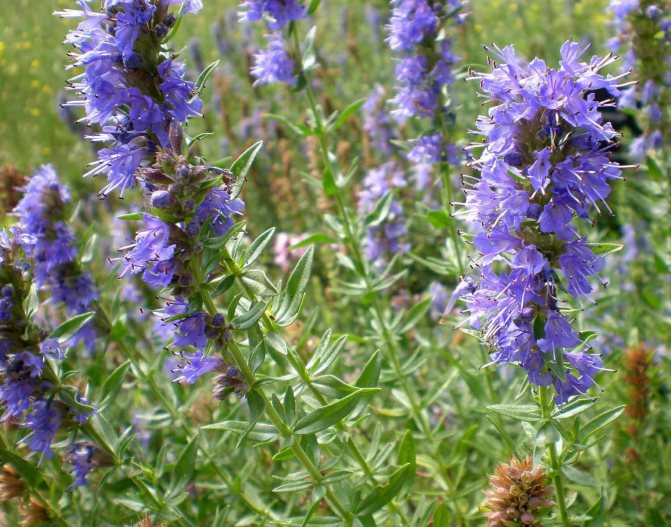

To avoid evaporation of moisture from the soil, the cuttings can be covered with caps made of:
- plastic;
- glass.
The cuttings are sheltered from direct sunlight and watered regularly. When they take root, the shelters are removed, and when autumn comes, the seedlings are planted in open ground. With good care, Hyssop will bloom next year.
Hyssop care
Growing hyssop on your site is easy enough. To do this, the bushes must be watered, if necessary, regularly loosened the surface of the soil, at first, pull out all the weeds immediately after it appears, and also feed the plants in a timely manner. Watering such a plant is carried out only during a prolonged drought, while 1.5 to 2 buckets of water are taken per 1 square meter of the plot. However, even in severe drought, the bushes look fresh and, as a rule, they only have enough natural precipitation. If the bushes grow very slowly, then for their feeding it is necessary to use a solution of complex mineral fertilizer (for 1 bucket of water from 20 to 30 grams), however, experts recommend using organic fertilizers for this purpose. Poor hyssop flowering is due to the fact that the soil contains an excessively large amount of fertilizers, to which the plant reacts extremely negatively.
Read also Champignons in the context of black you can eat
Formative pruning is carried out at the same time with the collection of medicinal raw materials. Pruning bushes are very easy to tolerate, and after cutting they quickly grow back. In winter, they do not need shelter. In autumn, pruning of hyssop stems is carried out to a height of 10 to 15 centimeters. Such a procedure is necessary to stimulate lush flowering and so that the bush is thicker next year.If this plant is cultivated to obtain medicinal raw materials, self-seeding should not be allowed, since this causes a weakening of the medicinal properties of hyssop. In order to prevent self-seeding, it is necessary to systematically remove the weeds and cut the bushes before the seeds begin to ripen.
Despite the fact that this crop can be grown in the same area for about 10 years, experts advise rejuvenating the bush once every 4 years, because it begins to bloom much worse. In order to rejuvenate the hyssop, the grafting method is used, or the bush is removed from the ground, divided into parts and planted in a new place.
Diseases and pests
This plant is very resistant to diseases and harmful insects, but in some cases it can get sick with rhizoctonia, white spot, rust or fusarium wilt. For the treatment of affected bushes, a solution of a fungicidal preparation is used. Experts advise not to allow the bush to get sick, for this it is enough to properly care for it and adhere to the rules of crop rotation. After the bush is cut in the fall, the site is cleared of plant debris.
No harmful insect can harm the hyssop, as its smell scares them away. It was also noticed that pests do not settle on crops growing in the vicinity of this plant.
What can be grown after hyssop
The area where hyssop used to grow is perfect for growing peas, tomatoes, garlic, beans, potatoes and onions.
Cooking applications
Hyssop, whose useful properties as a medicine are widely known, is no less interesting as a culinary ingredient.
Moreover, it works well both in combination with other herbs and as a main spice. In addition, hyssop is an excellent raw material for making tea. The drink from its leaves and flowers turns out to be tart, bitter, spicy, with a pleasant aroma.
For culinary and medicinal purposes, two types of hyssop are used: ordinary and aniseed. Most often, the herb is used to flavor dishes such as:
- meat casseroles;
- roast;
- soups;
- sausages;
- cheeses and dishes made from fermented milk products;
- vegetable stews.
Pea or lentil soup flavored with hyssop in combination with marjoram is excellent taste. Spices should be added to hot dishes 10-15 minutes before the end of cooking, then they will reveal their taste and aroma in the best way.
Previously put in the soup, the spices quickly lose their strength, essential oils evaporate along with the water during the cooking process and all the piquancy of the dish is lost. For the same reason, you should not subject the first course to active boiling after adding spices, and the pan should be tightly covered with a lid to preserve the aroma.
Fresh hyssop greens can be added to cottage cheese and soft brine cheeses. It gives fermented milk products a pleasant piquant bitterness. Dry herb can be added to hard cheeses at the stage of kneading the cheese grain, or you can sprinkle it on ready-made slices of cheese. Hyssop is no less interesting in sausages. It gives meat products a mild flavor and significantly enriches the palette of flavors in the finished dish. This spicy herb will sound especially expressive in sausage products based on chicken and minced pork.
Of course, one cannot fail to mention the preparation of drinks from hyssop. In this case, it is most appropriate to take the flowering part of the plant for brewing. Such tea will be very fragrant, with light honey flavors. But since hyssop itself is a very strong spice, it is best to brew tea from it in combination with other, lighter herbs.Chamomile, mint, lemon balm, thyme, as well as currant leaves, cherries, mulberries, strawberry leaves and flowers are perfect as a supplement.
Types and varieties of hyssop
The chalk hyssop looks very similar to the medicinal hyssop: it is also a semi-shrub, the height of which varies from 0.2 to 0.5 m. In the chalk hyssop, blue flowers have a sharp balsamic aroma. This species is quite rare, but it prefers to grow on chalk deposits. It is listed in the Red Book of Ukraine.
Anise hyssop is also a semi-shrub, its height varies from 0.5 to 1.1 m. On the surface of green leaf plates there are brown-violet markings, foliage has a pleasant aniseed smell, which is significantly enhanced when rubbed. The flowers of this species have a lavender color, they are eaten, adding to various salads.
A detailed description of medicinal hyssop can be found at the beginning of this article, the following varieties of this species are most popular:
- Chord... The medium ripening variety is resistant to diseases and frost. The color of the flowers is pink.
- Pink fog... This medium-ripening variety is resistant to drought, frost and heat. The flowers are pale pink.
- Amethyst... The height of the bush is from 30 to 35 centimeters, and in diameter it reaches from 0.4 to 0.5 m. The color of the flowers is pink, flowering begins in the last summer weeks and ends in late autumn.
- Frost... The medium-ripening variety is distinguished by its yield. The color of the flowers is white.
- Pleasant Semko... The height of the semi-spreading bush is from 0.5 to 0.6 m, it is decorated with small dark blue flowers.
The following varieties are also popular: Pink Flamingo, Dawn, Doctor, Nikitsky White, etc.
Hyssop - description, habitat and species.
Hyssop, also called blue St. John's wort, belongs to the Yasnotkov family. The culture is a herbaceous shrub 50-70 cm in height with dark green small lance-shaped leaves. The inflorescence-spike, crowning the stem, consists of small, densely planted, two-lipped flowers, 5-6 flowers each, located in the leaf axils. The buds in the inflorescence do not bloom at the same time, and the plant has a decorative appearance for a long time. Thanks to this, hyssop is an excellent material for landscape design. The leaves and stems of the plant have a spicy, bitter taste, and the flowers spread a strong pleasant aroma with hints of camphor.
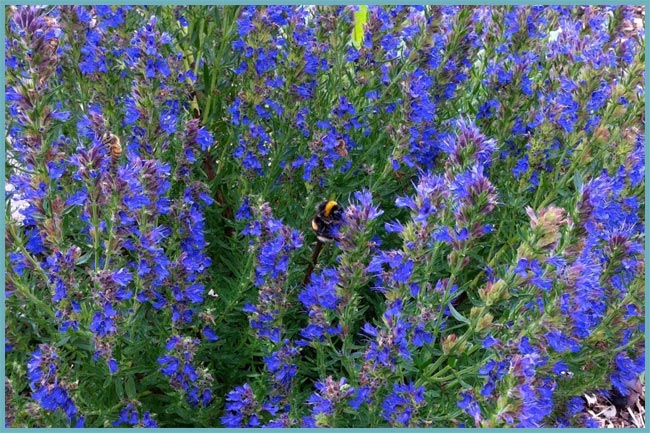

Hyssop is a plant that will not only decorate the garden, but will also benefit the body when taken internally
Under natural conditions, tall bright candles of hyssop inflorescences - blue, white, blue and even pink flowers, can be found in the southern and middle latitudes of the European part of the continent, in the south of Western Siberia, in Central, Minor and Central Asia, at the foothills of the Alps, the Caucasus and the Carpathians , but the Mediterranean is considered the birthplace of hyssop.
Previously, about 50 plant species were ranked in the genus Hyssop, but in the modern view only 7 species are referred to it, the most popular of them are:
- Hyssop medicinal.
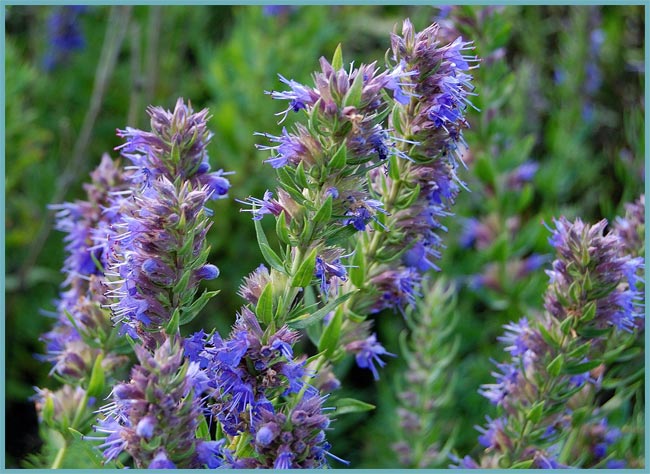

Hyssop medicinal - Narrow-leaved hyssop.
- Hyssop chalk.
- Hyssop is dubious.
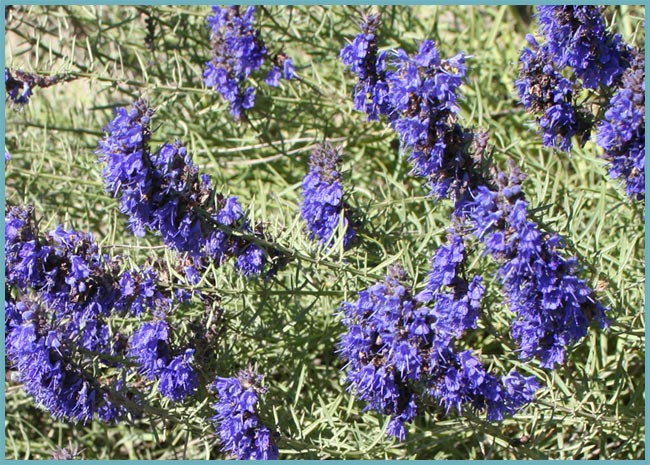

Hyssop dubious - Anise hyssop.
Hyssop properties: harm and benefit
Healing properties of hyssop
Hyssop has medicinal properties that humans have been using for a long time. The plant contains many vitamins: A, B, C, E, K, D and PP. The roots and foliage are rich in iron, copper, manganese, potassium, selenium, chlorine, silicon, fluorine, tungsten, and boron. This plant also contains tannins, bitterness, aldehydes, oleanolic and ursolic acids, flavonoids, alcohols and essential oils.
The varieties with pink flowers contain the minimum amount of essential oil, while the varieties with white flowers contain the maximum.This plant is distinguished by antipyretic, diuretic, laxative, antimicrobial, wound healing, expectorant, antiseptic, bactericidal, analgesic, antihelminthic and stimulating effect. Such a plant is used for colds and infectious diseases, as well as for diseases of the respiratory tract and oral cavity, inflammation of the urinary tract, rheumatism, neuroses, angina pectoris, colitis, intestinal distention, conjunctivitis and skin diseases.
In order to heal the body, the roots and foliage of hyssop are used, and flowers are also used, which in dried form are added to tea for various diseases. However, the most popular are drugs made on the basis of hyssop, such as: tincture, decoction or infusion.
For diseases of the gastrointestinal tract, as well as for the treatment of wounds, hematomas, burns and other injuries of the skin, tincture is used. Infusions are used for washing the eyes with conjunctivitis and for gargling with stomatitis. For diseases of the upper respiratory tract, inflammation of the urinary tract and colds, decoctions are used. Tea with such a plant is used for coughs, sore throats and colds, it helps to lower the temperature, increase blood pressure, and also soothes the nerves.
Contraindications
Such a plant is considered slightly poisonous, in this regard, it must be used extremely carefully for food and for medicinal purposes. That is why, before you start taking hyssop, you should definitely consult with a qualified specialist. It should be remembered that with high doses or with prolonged use, spasms may appear. This plant is not recommended for use by women during pregnancy, children under 12 years of age, as well as people with hypertension, kidney disease or high acidity of the stomach. This plant should not be taken while breastfeeding, as it contains components that can reduce or completely stop lactation.
Hyssop (blue St. John's wort) is a medicinal plant with white, pink or blue flowers that gathers bees and butterflies around itself, thanks to the sweetish-spicy nectar. Hyssop is frost-resistant, so it can be grown in any climatic conditions.
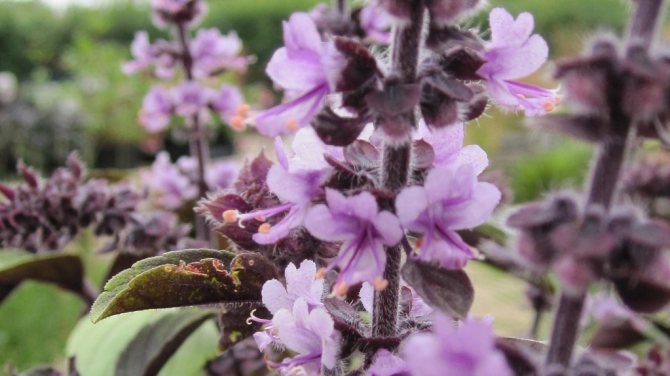

The decorativeness of this perennial, combined with unpretentiousness, made hyssop popular with gardeners. Many of them are interested in the question of where hyssop grows in nature. Hyssop grows in the wild nature of the North Caucasus, Kazakhstan and the Mediterranean countries. Hyssop is a herbaceous plant, but the height of its tetrahedral stems, which grow up to 70-80 centimeters in height, makes it a shrub.
Hyssop stems, when planted in fertile soil, produces 40-50 stems, which in summer are densely covered with small flowers that bloom alternately. At the end of flowering, yellow pods filled with brown seeds are formed on the stems. The stately bushes do not require formation and have high decorative properties. Hyssop has medicinal properties and has been used in medicine since the time of Avicenna.
Hyssop herb
In the common people, the plant is known as blue St. John's wort, hyssop herb, yusefka or northern lavender.
There are three main types of plants in the genus Hyssop.
- Common hyssop.
It grows in mountainous regions and in the steppe. Differs in medicinal properties and high growth. This shrub is woody from the root and has relatively small leaves. One of the properties of the plant is its fertility: flowering occurs continuously throughout the season, which lasts from mid-summer to mid-autumn. Ears can be cut off without fear - flowers of white, pink and blue color will appear again. The flowering period of each inflorescence is about a week.
The branchy stems of the plant reach a height of 80 cm.Oblong foliage is located along the stem, differing in color: from light green closer to the root to dark green at the top.
The plant produces a nut-like fruit with oblong dark brown seeds up to 2.5 cm in length.
- Cretaceous hyssop.
It got its name from the place of growth: in the wild it can be found on chalk deposits, but it is extremely rare, since it is listed in the Red Book.
When compared externally with the previous type, this plant variety has practically no distinctive features. In addition, the maximum height of the shrub does not exceed half a meter, and sometimes remains at the level of 20 cm. Flowers are most often blue. The most characteristic feature of chalky hyssop is its strong balsamic aroma.
- Anise hyssop.
A branchy half-meter bush of hyssop has leaves with anise scent. This variety is used for culinary purposes as a spice, both dry and fresh. Leaves, stems and flowers are used for food, as a spice, when the dish needs to be given bitterness.
Breeding varieties
Hyssop is a variety of colors. There are about 10 popular varieties, each with a specific color. Amethyst, Nikitsky white, Pink fog, Hoarfrost - these and other varieties speak for themselves.
Growing several varieties in the same area can lead to crossing, since the shrub is cross-pollinated. To prevent this from happening, hyssop needs spatial isolation.
Popular species and varieties with photos
In the wild, only 3 species of hyssop are known, but other varieties with decorative properties have been bred by breeders. The following types of hyssop are most popular among gardeners:
- Drug. In nature, it grows on mountain slopes and steppe zones. The height of the shoots is about 50 centimeters. The flowers are blue or purple. It is a valuable honey plant. It is used as a spice in cooking and for the preparation of medicinal tinctures.
- Doubtful. Plant height 25-30 centimeters. The flowers are blue-purple. Prefers stony soils.
- Anisic... Low-rise type used as curbs for garden paths and framing ridges. Has a grown aniseed aroma. Varieties are widespread: pink flamingo, Amethyst, Doctor, etc.
- Narrow-leaved. Height 30-35 centimeters. The flowers are violet-blue. In canning, it is used as a perfume. It is used as a spice for cooking fish.
- Chalky... It got its name due to its initial growth on chalk formations. It blooms in blue flowers with a balsamic scent. Used as a fragrance in perfumery. This species is rare, therefore it is listed in the Red Book.
- Zeravshansky... The highest view is up to 80 centimeters. It blooms in white.
Read also Red mushrooms in a pine forest
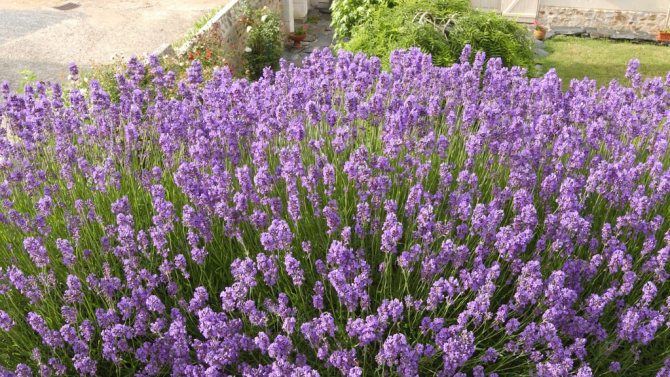

Common types
More than 50 varieties of culture are now known in the world. The most common types: medicinal hyssop, chalk, anise.
Features of the species:
- Medicinal (ordinary) - a shrub plant with a rigid stem up to 60 cm tall and stiff twigs. Flowers (blue, white, pink) grow in leaf axils with drooping edges. Flowering lasts from mid-summer to September. The medicinal properties of hyssop gave the name to the species.
- Anise (anise lofant) - branched perennial 50-110 cm tall and purple-brown markings on the leaves. Each branch has a violet-blue inflorescence in the form of a spikelet (8-15 cm), exuding the smell of anise when rubbed. It has medicinal properties, in the countries of the East it is equated to ginseng, eleutherococcus, lemongrass.
- Cretaceous - a low, up to 30 cm, plant, similar to hyssop, exudes a strong balsamic aroma. It is named so because of its growth in the wild on chalky soils. Listed in the Red Book of Russia and Ukraine.
Outdoor cultivation and care
Hyssop is an unpretentious plant and therefore planting and caring for it in the open field requires minimal effort. But the observance of certain conditions to maintain the decorativeness of the plantings is nevertheless necessary.
Choosing a landing site
An ideal spot for a hyssop is an open or slightly shaded area. Its planting in the shade and in waterlogged areas is not permissible. It is especially not recommended to plant hyssop near water bodies and under trees: in such conditions it will feel oppressed, although it will not die.
It is possible to grow hyssop in one place from 5 to 10 years, then a transplant is necessary. If you do not change the place of cultivation, the plant will begin to degenerate: the shoots will begin to shrink, the number of flowers will decrease.


Hyssop doesn't like shadow
Requirements for the composition of the soil
Any garden soil is suitable for growing hyssop, since it is not particularly picky about the quality of the soil. The only contraindication is areas with high acidity. Therefore, the area for growing hyssop must be calcareous.
The site is being dug up in the fall. Filled with compost (5 kilograms per square), superphosphate (30 grams), potassium salt (20-30 grams). In the spring, the soil is re-dug up and 15-20 grams of ammonium nitrate or urea is added to it. With this soil preparation, hyssop will feel good and bloom profusely for 5-6 years.
Place on the site and soil
Although Hyssop has long been adapted to our climatic conditions, it still comes from the warm climate of the Mediterranean, which leaves a corresponding imprint on the characteristics of its cultivation. The plant prefers sunny areas on a small hill.
Hyssop is not particularly sensitive to soils, the main requirements are lightness, air and moisture permeability, the reaction of the medium from neutral to slightly alkaline. It is not advisable to plant the plant in places where cold winds and drafts, stagnant water and waterlogging are observed.
Seedling and seedless growing methods
Hyssop can be easily grown from seed by sowing outdoors or through seedlings.
Sowing seeds in open ground
Growing from seeds is possible when sowing before winter, since during this they will undergo a process of natural stratification.
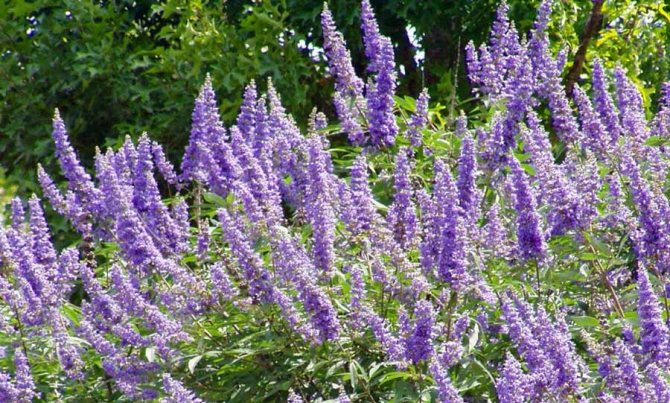

Hyssop can be grown by seed
Sowing in spring is possible. Before sowing, the seeds are mixed with coarse sand, poured into the prepared grooves and sprinkled with soil with a layer of 1 centimeter. So that the seeds are not washed out during watering, the grooves are additionally mulched with peat. This technique will also help prevent crusting on the surface of the grooves. When sowing in the fall, mulching with peat is not used.
Important. The seeds are small enough, so it is not recommended to sprinkle them with a large layer of soil.
Hyssop germinates at a temperature of plus 2-3 degrees in 10-14 days. When sown with seeds, flowering occurs 2 weeks later than with seedlings. Flowering with this method of cultivation begins only from the second year.
Growing seedlings
When growing hyssop through seedlings, the plant begins to bloom in the first year after planting. Sowing for seedlings is carried out in early March. Seeds are sown in a shallow container and sprinkled with a layer of soil 1-1.5 centimeters. Crops are covered with glass or foil.
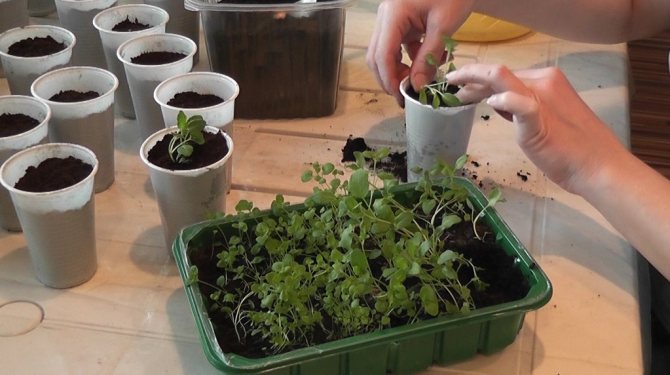

Hyssop seedlings need picking
In the stage of two true leaves, the seedlings dive into separate pots. So that when transplanting into open ground, the roots are not damaged. When picking, the sprouts are buried 7-8 centimeters so that the growth point is on the surface.
How and when to plant hyssop
The unpretentious and fast-rooting blue St. John's wort is grown from seeds, easily cuttings and propagates by dividing the bush.
Dividing the bush
A bush that has reached 5-7 years of age requires division, since after crossing the five-year milestone the plant grows old, rejuvenation is necessary to preserve all its qualities.
Dividing a bush is an easy and quick way to reproduce blue St. John's wort.
In the spring, when the soil has already warmed up, but the plant has not yet started to grow, in late April-early May, it is dug up, divided into several parts, each of which has its own root system.
To facilitate the adaptation of new plantings, the roots are treated with Heteroauxin, Kornevin, Zircon or Epin, and the cuttings are planted in prepared holes.
Watering and mulching is the final stage of planting.
Cuttings
Bee grass can be cut from spring and throughout the summer.
For cuttings, strong green shoots are chosen, cut into 10-15 cm, treated with root formation stimulants.
For rooting, containers are prepared filled with a moistened substrate of peat, vermiculite and sand, or immediately a bed in partial shade (peat, vermiculite and sand are added to the garden soil for ease).
Cuttings planted in the substrate are watered and covered to create favorable conditions and protect with plastic bottle caps.
Growing from seeds
Seeds of bee grass are grown directly in the open field or as seedlings (it is the seedling hyssop that blooms in the first season).
Planting blue St. John's wort with seeds in open ground is possible before winter: seeds mixed with sand are sown in grooves, covered with a layer of earth up to 1 cm.
Podwinter crops do not mulch, so that with the last autumn or first spring heat, the seeds do not spill out without having time to hatch.
In May, seeds can be planted in open ground according to the same scheme, but after mulching the grooves: this will prevent the appearance of a hard crust on the soil after watering.
Within two weeks, seedlings appear, which, after growing to the 6th leaf, are thinned out.
After thinning, the strongest plants should remain at a distance of 20-25 cm from each other.
Seeds are planted on seedlings in March, two months before the hyssop is transplanted into open ground.
For sowing seeds, any universal soil from a store, garden soil steamed or spilled with potassium permanganate for disinfection, or a substrate of sand, vermiculite and peat is suitable.
When sowing in a seedling box, grooves are made in the ground, seeds are laid out in them at a distance of 3-4 cm or a mixture of seeds and sand is poured into the furrows.
The furrows are sprinkled with a centimeter layer of soil, slightly compacted and additionally irrigated with a sprayer. The box, covered with foil or glass, is placed in a warm place.
When the first shoots appear, the seedlings are provided with good lighting, and they no longer need shelter.
With the appearance of the 2-3rd true leaf, the hyssop is dived into separate pots, placed in a warm place with good lighting, where the plants develop until transplanted into open ground.
At the end of May, in the Moscow region and in most of central Russia, a stable positive temperature is established during the day, when hyssop can be planted in the garden.
By this time, the hyssop seedlings are tempered by regular airing: first for half an hour, then gradually increasing the time of air baths, the seedlings are taken out to an open place: a balcony, a loggia, an open window sill.
Open ground planting technology
Hyssop seedlings are ready for planting in open ground at the age of 50-60 days. By this time, 5-6 true leaves are formed on each plant. Planting is carried out when a stable temperature of at least 10 degrees Celsius is established outside. Adult plants are not afraid of short-term frosts, but young, not yet rooted bushes may die. With the threat of night frost, young plants are covered by installing a wire frame over them.
Important. The distance between hyssop bushes is 30-40 centimeters. With this planting pattern, they form a dense living border.
Useful properties and contraindications
In some European countries, hyssop is used by official medicine.In Russia, so far, the properties of this medicinal herb are used to a greater extent by traditional healers.
Hyssop with its pharmacological effect on the human body resembles medicinal sage. In therapy, only the upper parts of the shoots with inflorescences are used. It is here that the largest accumulation of essential oils, resins, tannins, acids (oleic and ursolic), as well as the pigment isssopin.
In folk medicine, the expectorant, antispasmodic and antiseptic properties of the plant are used. Hyssop has a positive effect on such health problems:
- diseases of the gastrointestinal tract;
- chronic colitis, flatulence and constipation;
- laryngitis, tracheitis, bronchitis;
- angina and anemia;
- various neuroses and rheumatic pains.
Also used decoctions of hyssop and externally - for rinsing the mouth with gingivitis and stomatitis, for washing the conjunctival eyes, for ulcers, wounds, bruises, bruises (in the form of compresses).
Hyssop also promotes better digestion, so it is often taken to increase appetite.


Each treatment process should be treated individually, because where there is benefit for some, there will certainly be contraindications for others. In addition, hyssop can be attributed to weakly poisonous plants, and this must be taken into account.
- When treating diseases of the gastrointestinal tract, the acidity of the stomach must be taken into account - with increased hyssop it is contraindicated.
- You should not use drugs based on hyssop for hypertensive patients and people with kidney problems.
- In pregnant women, this herb can cause miscarriage.
- Hyssop is also contraindicated in nursing - it adversely affects lactation.
- Even a slight toxicity, as well as a high percentage of essential oils, is already a reason not to give hyssop-based products to children under 12 years of age.
- For people with epilepsy, preparations of this herb are given only after consultation with the attending physician and strictly in certain dosages.
In all other cases, when it is possible to use the culture in folk medicinal compositions, it should be done with caution - an overdose can lead to serious consequences.
It is not for nothing that Hyssop is called a spicy-flavoring culture - it is really used in the food industry. For example, weed is one of the components of the popular Chartreuse liqueur. But spice is added not only to drinks - you can also find it in the composition of some oils and sausages that are made in European countries. Foreigners add hyssop to stuffed eggs and mix it with cottage cheese.
In the home cooking of compatriots, hyssop (young leaves and inflorescences) goes like greens in various dishes. The aroma of culture is a good addition to the nutritional quality of meat and fish products. The herb gives a savory taste to salads. Along with basil, celery, dill and other herbs, hyssop is used in home preservation.
But introducing this plant into the diet, you need to know when to stop so as not to cause poisoning of the body. Again, before seasoning dishes with hyssop, you should remember the contraindications to it.
If the herb is still used in cooking, you will have to strictly adhere to this rule - in no case cover the container with a lid. The essential smells of hyssop will saturate all food, spoiling it. But apple cider vinegar, this property will only add originality. 4 sprigs of hyssop are soaked in vinegar for several days, and then seasoned with this composition salads (but this is not for everybody).
Hyssop. Spicy plant: video
Probably few of us are familiar with such a flower as hyssop. But this is a unique medicinal plant! His homeland is the Mediterranean. It is grown as an ornamental and medicinal plant, as well as an excellent honey plant. Hyssop has a tart, spicy-bitter taste and a strong camphor aroma. The second name for hyssop is blue St. John's wort.
The hyssop plant is a perennial low shrub, absolutely unpretentious, drought-resistant and winter-hardy. It grows on any soil, but does not like too wet soil. Numerous shoots of medicinal hyssop reach a height of up to 80 cm. In one place, hyssop can sometimes grow up to 10 years.
Hyssop blooms with blue, pink, white, blue, purple flowers. Moreover, on one inflorescence, the flowers open gradually, due to which the plant remains decorative for a long time.
Hyssop blooms in July-September. However, if you cut off the flowering inflorescences in the summer, then lateral branches with new buds will appear on the remaining shoots. Such a cut will contribute to the long flowering of the plant, up to the onset of frost.
Also gradually, starting in September, small dark brown hyssop seeds, which are in yellow capsules, ripen.
Planting hyssop
Hyssop is propagated most often by seeds. In order to collect them, the inflorescences are cut off at a time when the tops of the shoots begin to turn brown. Inflorescences are laid out on paper for ripening. When the seeds are dry enough, they need to be gently shaken out of the pods. Hyssop seeds remain viable for 3-4 years. As practice shows, growing hyssop from seeds is not difficult at all.
Growing hyssop from seeds can be both seedling and seedless, when they are immediately sown in open ground. To grow seedlings, hyssop seeds must be sown in March, and they can be sown in the garden as early as May. no seeds are needed, and in a couple of weeks you will receive friendly shoots of this plant.
When growing hyssop in the country, seeds should be sown in rows with a distance of 20 cm between them. It is necessary to close the seeds into the soil shallowly, by about 1 cm. When 5-6 leaves appear, the seedlings must be thinned out, keeping the distance between them at 25-30 cm. Hyssop seedlings are responsive to fertilizing with mineral fertilizer or ammonium nitrate.
If you decide to grow hyssop through seedlings, which will speed up the onset of flowering, then the seeds must be sown in boxes, which are then put in a greenhouse or greenhouse. When 5-6 true leaves appear, the seedlings can be planted in a permanent place in the garden.
Features of hyssop care
Hyssop needs regular watering, loosening the soil and feeding. Watering should be frequent but moderate. The soil is slightly moistened so that the roots do not lock and rot.


Hyssop prefers moderate watering
In the first two years after planting, special attention should be paid to regular feeding. Organic and mineral compounds are suitable for fertilization. Top dressing is carried out every 20-30 days. With the onset of flowering, nitrogen is completely removed from the dressings. For adult bushes, fertilization is not so important, since they perfectly extract minerals from the soil on their own.
Advice. To prolong the flowering of the hyssop, it is necessary to regularly pick off the withered buds from the bush.
After flowering, the plant must be prepared for wintering. At the end of autumn, sanitary pruning of shoots is carried out, which stimulates the growth of new stems in the next growing season. After pruning, shoots should be 10-12 centimeters high.
The hyssop does not need shelter for the winter. To protect against drying frosts, you can lightly sprinkle the rhizome with foliage or small straw.
Care
The main rule in hyssop care is regular but moderate watering. You will also need to weed the soil with loosening and fertilizing with mineral or organic fertilizers. It is especially important in the first months of the plant's life and in case of stunted growth. Adult bushes need much less care, they look fresh even in the heat and are rarely affected by diseases. Pruning shoots will prolong flowering and new buds will form.
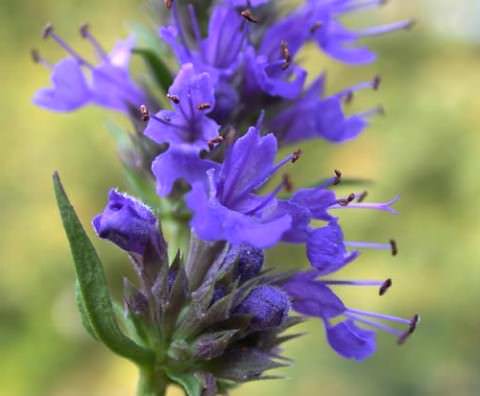

If self-seeding is undesirable, the inflorescences are cut in advance and dried.Then you can shake them over a sheet of paper and collect the ripe seeds, they will not lose their germination for 3-4 years.
Hyssop usually tolerates cold well, but in areas with more severe climates, it is better to mulch it for the winter, for example, with peat.
Hyssop on the site
The use of hyssop in landscape design is sure to be found. It retains its decorative effect for a long time and goes well with other fragrant plants both in gardens that imitate wildlife and in flower beds of various styles. The bushes will help create a beautiful hedge and separate areas of the site. In addition, it tolerates droughts, so it often becomes an adornment of rocky alpine hills and rockeries.
The aromatic greens of hyssop are useful in cooking, add spicy bitter notes to dishes and improve appetite. But he is also an excellent healer. People used the healing properties of the miracle plant many centuries ago.
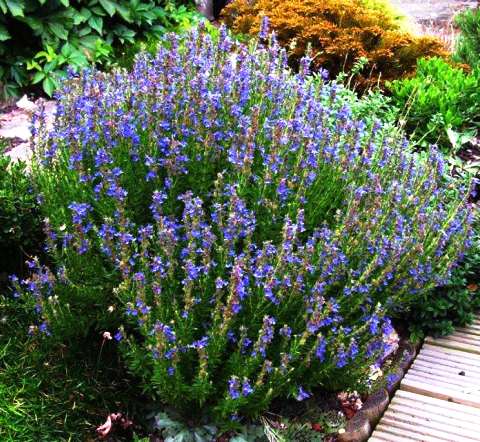

Decoctions, powders and compresses disinfect and heal wounds well, relieve some skin diseases, such as eczema and boils. When coughing and to relieve fever, even fresh grass is brewed, it is enough to pour 2 teaspoons with a glass of water and bring to a boil over low heat, you can add a spoonful of honey. Infusion of hyssop gargle with sore throat, rub the eyes with conjunctivitis, it is taken to relieve hangover.
Shoot tops are harvested during the flowering period. It is recommended to dry them slowly, you can simply spread them out on fabrics or hang small bunches. Then the herb is put in a jar and tightly closed with a lid to retain the aroma longer.
Plant propagation methods
It is necessary to replant or renew hyssop bushes every 5-7 years so that it does not degenerate and retains maximum decorative effect. Three methods are acceptable for propagation: sowing seeds, dividing a bush and grafting. The seed propagation method was described above.


The bush must be renewed every 5-7 years of its life.
Dividing the bush
The fastest way to get a lot of bushes in a short time. The bush is dug up in the fall, after flowering, and divided into several parts. The resulting specimens are planted in separate holes and watered abundantly. After planting, watering is not carried out. The division must be carried out before the onset of frost, so that the resulting plots have time to take root.
Propagation by cuttings
This method is suitable for propagation of hyssop throughout the growing season. Cuttings 10 centimeters long are cut from a bush and rooted in a mixture of sand and peat, deepening in half. To retain moisture in the substrate, the cuttings are covered with glass or plastic caps on top. Planting should be protected from sunlight and watered periodically.
As soon as the cuttings sprout, the caps are removed from them. The resulting plants can be planted in a permanent place in the fall. Hyssop, obtained from cuttings, blooms the following year.


The plant can be propagated using cuttings
Important. When growing hyssop, it is necessary to periodically prevent its reproduction by self-seeding. Bushes from seeds spilled onto the soil grow weak, the site quickly becomes clogged and takes on an unkempt look.
How to collect hyssop seeds
The seeds are harvested at a time when the capsules begin to turn brown. You should not wait for the seeds to fully ripen so that the capsule does not open and the seeds do not spill out onto the soil. The seed pods are cut with the shoots and hung upside down in a dry place. To prevent the seeds from spilling out after ripening, the twigs are placed in fabric bags.
Before spring planting in open ground, seeds are stratified in the cold for 30 days. When sowing seedlings, stratification is not necessary.
Hyssop, cultivation
The shrub is quite resistant to any growing conditions. However, it has some preferences:
- access to the sun's rays;
- moderate humidity;
- loose soil;
- neutral and slightly alkaline soil;
- protection from the cold in winter with a thick layer of snow.
The plant is perennial. It can grow from one root for 10 years. Hyssop propagates vegetatively (by cuttings, division of rhizomes) and seeds.
Propagation of hyssop by seeds
Good seeds ripen only in the second year of plant life. Seeds are collected in this way: fruits on long stems are cut, tied in a bunch and hung upside down above a sheet of paper for several days so that the ripe seeds spill out on their own.
You can store seeds for up to 4 years. Sow them directly into the open ground or preliminarily into the greenhouse. The time of planting seeds in the greenhouse is March. Outdoors - May. Hyssop is sown in the middle of autumn.
If the seeds are germinated in a tray, you need to pour soil into the container, sow the seeds in furrows with an indent of 5 cm and sprinkle with earth on top with a layer no thicker than 0.8 cm.To prevent freezing, you can equip a greenhouse inside the greenhouse - a garden bed, or a tray covered with film. Seedlings grow no later than 2 weeks later. After another week, the seedlings can be broken through at intervals of 5 cm or planted in pots.


Planting can begin as soon as more than 5 leaves appear on the shoots. This will happen approximately 1.5 - 2 months after the first shoots appear.
Before planting in open ground, the soil is preliminarily loosened: it is dug up with a shovel and cultivated with a pitchfork. An electromechanical garden tool can be used. When planting seedlings, the sprouts are dived and planted at a distance of about 10 cm from each other.
If the seeds are sown directly to the flowerbed, it is worth preparing the loosened soil and sowing the seeds in rows, sprinkling them shallowly with earth. The row spacing must be at least half a meter. As soon as 5-8 leaves appear on the seedlings, the rows can be thinned out, leaving the distance between the plants about 20 cm.
Flowers will appear in the first year, but there will be few of them, and the seeds will not be capable of reproductive function.
Hyssop, vegetative planting
You can plant a shrub by sprouting branches, dividing the root or planting a piece of root. This is done mainly in the spring.
To freshen up an aging 4-year-old plant, it is dug up, and the root is divided into several parts. At the same time, no special antimicrobial treatment is required - hyssop is resistant to change and unpretentious. Root parts are not planted very deeply in the ground.
Cuttings should be started in the fall. Before the onset of cold weather, the bush is thoroughly sprinkled with humus, peat and earth. It is watered before the onset of frost. Shoots in this case will be more adapted to germination. Cuttings of at least 10 cm are separated from the bush and planted immediately into the ground. They are well watered. Accepted cuttings need to be pruned to make the bush thicker.
Use in landscaping and combination with other plants
This shrub retains its decorative effect during the entire vegetative period, therefore its use of hyssop in landscape design is quite diverse. It will serve as an excellent decoration for rockeries and alpine slides; hyssop looks especially impressive against the background of stones. Combinations with mint, lavender, rosemary, oregano and sage make a real medicinal flower bed.
Hyssop is used as a framing for garden paths. For this, low varieties are planted at a distance of 25-30 centimeters from each other. An interesting solution is the enclosure of separate areas on the lawn with hyssop bushes with the planting of tall perennials inside the same hedge.
You can get acquainted with the peculiarities of growing and caring for hyssop in the video material. Happy viewing!
Combination with other ornamental plants
Drought resistance and undemanding soil, the ability to grow in the sun and stony soils, a long lifespan and long flowering are the qualities of hyssop used by designers in the design of rockeries and alpine slides.
Low-growing varieties of blue St. John's wort, forming a dense fragrant cloud of flowers during a shaping haircut, are effective when creating live borders, rabatok.
Hyssop is planted as a backdrop for first-tier plants in mixborders and complex flower beds.
In spicy front gardens and on medicinal beds, bee grass gets along well with other fragrant plants:
- sage
- mint and lemon balm,
- rosemary and thyme,
- oregano and lavender.
Growing conditions
Hyssop is an unpretentious culture that does not require close attention and scrupulous recreation of native conditions. Any type of soil will do, except swampy soil.
Care features:
- abundant watering is not required, periodic irrigation in hot weather is sufficient; excessive moisture has a detrimental effect on the flower;
- sanitary pruning of bushes must be carried out before winter, this has a stimulating effect on their development in the next season;
- work on the destruction of pests will not have to be done due to the specific smell of the plant, which repels harmful insects;
- you need to feed it in moderation so that the plant does not grow, to the detriment of flowering; complex mineral fertilizer must be applied a month after the seeds sprout: two tablespoons of the product are diluted in a bucket of water; then feeding is repeated once a month during flowering;
- It is not recommended to fertilize the flower bed with manure. He is able to interrupt the spicy aroma of a spicy plant.
Advice! On one bed, hyssop develops correctly for no more than 7 years, then degenerates. Experts advise replanting the bushes every five years, dividing them for reproduction.
Growing
The unpretentious handsome man blooms even on not particularly fertile soil. But no matter how simple planting is, caring for a hyssop requires attention, then it can grow beautifully for more than 5 years in one place. Reproduction of the plant is possible by seeds, dividing the bush and cuttings.
Seeds are sown in May in open ground or grown in seedlings in March. In the second case, they are placed in containers with soil, sprinkled with earth on top and left in the greenhouse.
If the time of night frosts has not yet passed, you can cover the top with a film. Seedlings will appear together in 14 days. After the warm weather is stable, the grown plants are planted in a permanent place, keeping a distance of 8-10 centimeters between the bushes. The earth is pre-dug up and well loosened.
Hyssop bushes are divided in the spring; when planting, do not bury the delenki too deeply. To get cuttings, you can cover the base of the bush with the lower shoots with fertile soil in the fall, then water it regularly. Shoots will give roots, in the spring they can be separated from the mother bush and planted in a permanent place. For better tillering, young plants are pruned.
Hyssop varieties
Hyssop is the name of a genus of plants, which, according to modern concepts, has only seven species.
Three of them are most popular in horticulture:
- Ordinary, or medicinal. Erect, lignified stems from below form a half-shrub 0.5-0.7 m high with small leaves. Long bloom from June to August, and fruits ripen until September. In the wild, it grows in the steppes and on mountain slopes.
- Anisic. Small branchy bushes no more than 0.5 m in height. The leaves exude a pleasant aroma of anise, which becomes brighter when rubbed. Flowers have a lavender color, are edible, become a good decoration for salads.
- Chalky. Outwardly, it resembles medicinal hyssop. A semi-shrub with a height of only 0.2-0.5 m. The inflorescences, which are blue in color, exude a bright balsamic fragrance. This type of plant can be called a pioneer, settling on chalk surfaces, for which it got its name. It is one of the rare plants listed in the Red Book.
Several breeding varieties of hyssop are now known: "Doctor", "Dawn", "Hoarfrost", "Accord", "Pink Mist" and others. Their difference lies mainly in the color of the inflorescences.
Important! Hyssop is capable of cross-pollination. When planting different varieties, they must be isolated or spaced a sufficient distance (however, this is not easy to achieve in small gardens).
Application
The aroma of hyssop - with a bitter taste.It is widely used in perfumery, aromatherapy and, of course, cooking. The young apical leaves of hyssop convey unique notes to salads, cottage cheese, meat and fish dishes. Hyssop pickles add spice. St. John's wort is widely used in folk medicine.
Essential oils and spicy scent are often used as a natural and harmless to humans and pets barrier against pests. They will also help ward off stray and neighboring four-legged hooligans to relieve themselves on flower beds, if St. John's wort is planted around the perimeter of the site. The sachets placed in a forbidden place for a domestic cat will remind her to send her needs in the litter box. Grass pads will also help keep the closet smelling good. However, it should be remembered that the aroma of dried St. John's wort is weaker than fresh.
Healing qualities
St. John's wort is found in almost all folk herbalists. Apply only the upper parts of the plant with flowers. They accumulate essential oils, resins, oleanolic and ursolic acids, tannins. The pharmacological effect of hyssop is similar to that of sage.
Its broth is good as a fortifying drink for aged people and as a wound healing agent. In folk medicine, the plant is used as an antispasmodic, antiseptic, expectorant.
The healing actions of Hyssop are observed:
- with gastrointestinal diseases;
- bronchitis, tracheitis, laryngitis;
- chronic colitis;
- neuroses;
- rheumatism;
- anemia;
- angina pectoris.
Hypericum infusions are used externally for rinsing with gingivitis, stomatitis, for disinfecting the eyes with conjunctivitis, for compressing for wounds, ulcers, bruises.
The influence of hyssop on the digestion process has been noted, it is prescribed to improve appetite.
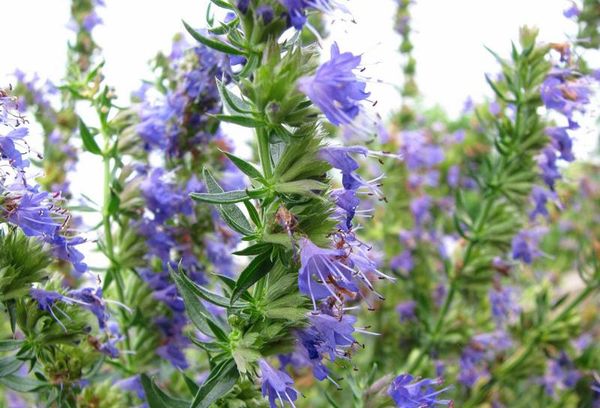

Hyssop: photo
In the wild, hyssop grows in the Crimea, Kazakhstan and the Mediterranean countries. In garden plots, it is successfully cultivated for decorative purposes.
A tall perennial shrub covered with small inflorescences of blue, purple, pink shades, is also called hyssop grass, blue St. John's wort and yuzefka.
If this plant is still unfamiliar to you, pay attention to the unpretentious hyssop, planting and caring for it is extremely simple. The stately bushes are not only beautiful, their shoots have long been used as a spice and are famous for their healing properties.
It reaches a height of 80 centimeters. Flowering begins in June and lasts until the October frost. The fragrant honey plant is rich in pollen and will attract bees.
A group of several hyssop bushes will favorably decorate the landscape design and provide the hostess with spicy herbs for sauces, salads and soups, marinades and pickles, various fish and meat dishes. During the season, you can cut off young buds and leaves several times, the shoots will grow back.

